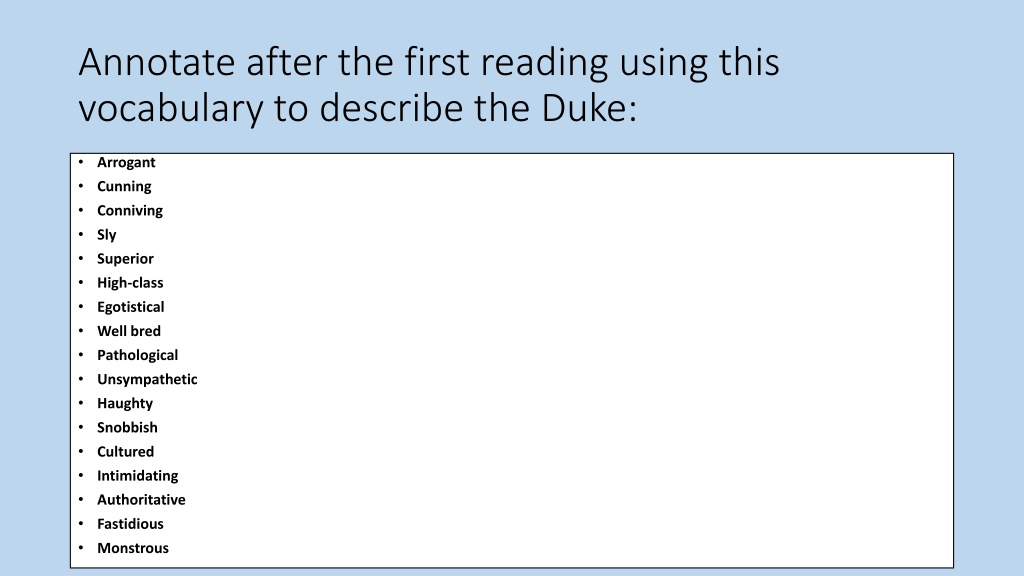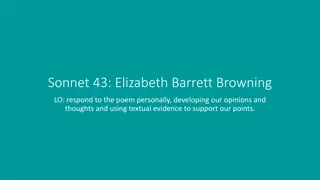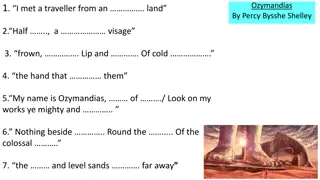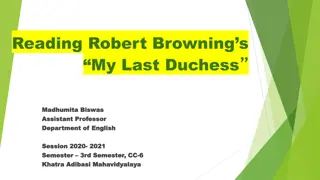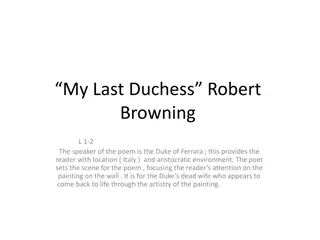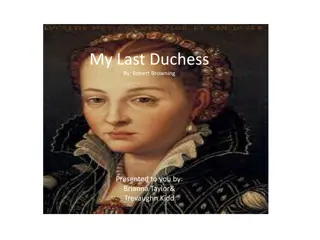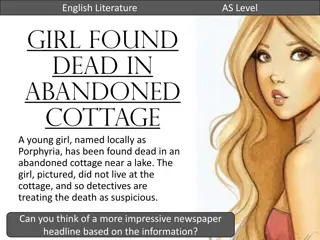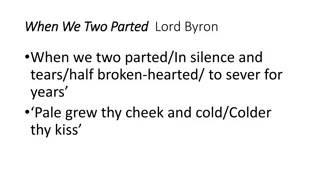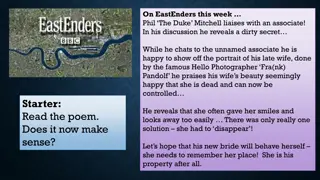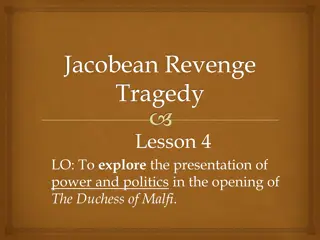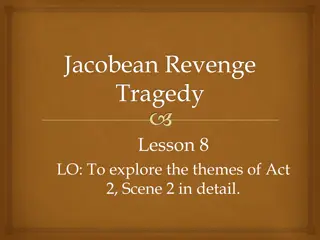Analysis of "My Last Duchess" by Robert Browning: Character Descriptions and Themes
The first reading provides a detailed analysis of the Duke using descriptors such as Arrogant, Cunning, Conniving, and more. The second reading focuses on the Duchess, portraying her as Courteous, Generous, and Kind. The messenger is outlined as a Narrative voice, Listener, and Emissary. The summary of "My Last Duchess" delves into the historical context, the Duke's dialogue about his late Duchess, and the chilling revelation of her demise at his hands.
Download Presentation

Please find below an Image/Link to download the presentation.
The content on the website is provided AS IS for your information and personal use only. It may not be sold, licensed, or shared on other websites without obtaining consent from the author. Download presentation by click this link. If you encounter any issues during the download, it is possible that the publisher has removed the file from their server.
E N D
Presentation Transcript
Annotate after the first reading using this vocabulary to describe the Duke: Arrogant Cunning Conniving Sly Superior High-class Egotistical Well bred Pathological Unsympathetic Haughty Snobbish Cultured Intimidating Authoritative Fastidious Monstrous
Annotate after the second reading using this vocabulary to describe the Duchess: Courteous Generous Kind Spirited Benevolent Appreciative Flirty Humane Caring
Annotate again for the messenger Narrative voice Listener Observer Non-judgemental Ignorant Inferior Emissary (paid messenger)
Summary of Meaning for My Last Duchess. This poem is loosely based on historical events involving Alfonso, the Duke of Ferrara, who lived in the 16th century. The Duke is the speaker of the poem and tells us he is entertaining an emissary who has come to negotiate the Duke s marriage (he has recently been widowed) to the daughter of another powerful family. As he shows the visitor through his palace, he stops before a portrait of the late Duchess, apparently a young and lovely girl. The Duke begins reminiscing about the portrait sessions, then about the Duchess herself. His musings give way to a moan about her disgraceful behaviour: he claims she flirted with everyone and did not appreciate his gift of a nine- hundred-years- old name. As his monologue continues, the reader realizes with ever-more chilling certainty that the Duke in fact caused the Duchess s early demise: when her behaviour escalated, [he] gave commands; / Then all smiles stopped together. Having made this disclosure, the Duke returns to the business at hand: arranging another marriage, with another young girl. As the Duke and the emissary walk leave the painting behind, the Duke points out other notable artworks in his collection.
